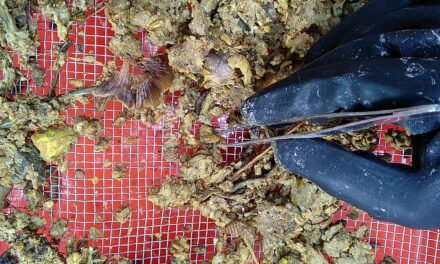The organic carbon in soil is main contributor to healthy soil conditions. It controls and balances soil properties. Soil organic matter content in Maharashtra is very low. As a result, soil fertility is reduced and changes are taking place in the physical and chemical quality of soil. For this the balance of organic carbon in soil should be maintained. Also, the organic carbon reduces the density of soil and improves soil aeration. This increases the water holding capacity of soil, reduces soil erosion, improves soil structure, thus increases crop productivity.
Objectives :
1. To study the effect of organic carbon on water holding capacity of soil.
2. To study the effect of organic carbon on crop yield.
3. To check the effect of agriculture waste mulching on the crop yield
Need of project:
The organic carbon of soil is decreased leading to low microbes in soil which causes high demand of fertilizers and low water holding capacity of soil. Hence, the demand of water is increased leading to higher pollution and ecological imbalance.
08/02/2022
Determination of water holding capacity of soil
Procedure
- 100 g of dry sample was taken.
- The funnel was set with filter paper on measuring cylinder.
- The sample was added on the filter paper. Then 200 ml water was added into the sample.
- The sample was kept for 20 minutes and the reading of water retained in measuring cylinder was taken.
- Then the water holding capacity of soil was determined by using following formula.
Water holding capacity = {(Total water added-Water retained in the measuring cylinder)/Dry weight of sample}×100
Observations
- Weight of soil=100 gm
- Total water = 200ml
- Water retained in the measuring cylinder = 165
Calculations
Water holding capacity of sand = {(200-165)/100}×100
=35%
07/02/2022 – 25/02/2022
Collection of soil and preparation of beds
The experiment is to be conducted in beds. So, firstly we collected bricks for beds and prepared 9 beds of size 2*2 feet by taking dimensions with the help of measuring tape. Then took the soil samples and determined its organic carbon. The soil with O.C. ranged between 0.2-0.4 was selected and collected.


Determination of Organic Carbon of Soil and compost
Determination of Organic Carbon of soil and compost was done by Walkley-Black Method and O.C. kit.
O.C. Kit method
For determining organic carbon of soil O.C. kit is simple and fast method compared to Walkley-Black method. It is qualitative method and gives range of organic carbon in soil. The O.C. of brown soil determined by O.C. kit method was more than 0.8. It was due to the compost mixed in that soil. After discussion, the soil from different place selected and determined its O.C.. It ranged between 0.2-0.4.
Walkley-Black Method
It is quantitative method and by performing this method exact value of O.C. of soil can be determined.
Apparatus
- 500-mL conical flasks
- 10-mL pipette
- 10-and 20-mL dispensers
- 50-mL burette
- Analytical balance
- Magnetic stirrer
Reagents
- H3PO4, 85%
- H2SO4, concentrated (96%)
- NaCl, solid
- Standard 0.167M K2Cr2O7:- Dissolved 49.04 g of dried (105°C) K2Cr2O7 in water and diluted to 1 L.
- 0.5M Fe2+ solution: Dissolved 196.1g of Fe (NH4)2(SO4) •6H2O in 800 mL of water containing 20 mL of concentrated H2SO4 and diluted to 1 L. The Fe2+ in this solution oxidizes slowly on exposure to air so it must be standardized against the dichromate.
- Ferroine indicator: Slowly dissolved 3.71 g of ophenanthroline and 1.74 g of FeSO4•7H2O in 250 mL of water.
Procedure
- Weighted 1.00 oven dried soil and transfer to a 500-ml conical flask.
- Added 10 ml K2Cr2O7 solution by means of pipette.
- Added 20 ml. H2SO4 of concentrated by means of a dispenser and swirled gently to mix of the flask out of the solution.
- Allowed to stand for 30 min. The flask was placed on an insulation pad during this time to avoid rapid heat loss.
- Diluted the suspension with about 200 ml of water to provide a clearer suspension for viewing the endpoint.
- Added 10 ml of 85% H3PO4, using a dispenser, and 0.2g of NaCl. The H3PO4 and NaCl is added to complex Fe2+ which would interfere with the titration endpoint.
- Added 4 drops of Ferroin indicator.
- Titrated it with 0.5 M Fe2+ to a burgundy endpoint. The color of the solution at the beginning was yellow-orange to dark green, which shifted to a turbid grey before the endpoint and then changed sharply to a wine red at the endpoint .
- Ran a reagent blank using the above procedure without soil. The blank was used to standardize the Fe2+ solution daily.
Formula:
𝑂.𝐶.= {(𝐵−𝑆)×𝑀 𝑜𝑓 𝐹𝑒2+×12×100}/4000
Where, B = ml of Fe2+ solution used to titrate blank S = ml of Fe2+ solution used to titrate sample 12/4000 = Mili equivalent weight of Carbon
Calculations:
The experiment was performed for 4 times to determine the organic carbon of brown soil. The calculations are as follows:
| Sr. No. | Blank titration reading | Titration with sample reading | % O.C. |
| 1. | 18 | 10.2 | 1.08 |
| 2. | 20.8 | 10.4 | 1.5 |
| 3. | 22 | 11.1 | 1.48 |
| 4. | 17.3 | 4.6 | 1.9 |
| 5. | 21.2 | 18.8 | 0.36 |
| 6. | 21.2 | 19.2 | 0.3 |
There were variations in the O.C. of soil. Because, for first 3 times phosphoric acid was not used in the procedure. After performing the experiment again, the O.C. of soil determined was more than 1. It was due to the compost mixed in the soil. So, we collected soil from different place and determined the O.C. of that sample. The O.C. of that soil was 0.3 and used same soil for bed preparation.
The O.C. of compost was determined by Walkley-Black method and it was 22.2%. For determination of O.C. of compost 0.1g of soil was taken.

After determination of Organic carbon of soil and compost, to increase the O.C. of soil theoretical calculations were done by following formula:
O.C. = {[(weight of soil*O.C.)+(weight of compost*O.C.)]}/Total weight
| %O.C. of soil | Amount of compost needed to add for 100 gm soil |
| 0.3 | – |
| 0.6 | 1.38 gm |
| 0.9 | 2.81 gm |
The soil was mixed with compost that is required to maintain the organic carbon of soil. Then filled the mixture of compost and soil in the beds by taking weight. In each bed around 60 kg of soil is filled.

Determination of water holding capacity
The sample of soil mixed with compost was taken to determine the water holding capacity of soil. The procedure used was same as mentioned above. The observations and calculations are as follows
| % O.C. | Amount of water retained in the cylinder (ml) | Water holding capacity % |
| 0.3 ( only soil) | 148 | 52 |
| 0.6 ( soil+ compost) | 132 | 68 |
| 0.9 ( soil+ compost) | 132 | 68 |
From table it can be seen that the water holding capacity of mixture of soil and compost is 68% that is more than water holding capacity of only soil.

26/02/2022
Sowing
The spinach crop selected for sowing as it can be grown throughout the year. After deciding the crop spacing i.e. 15*15cm, the all green variety was sown in the beds with the help of khurpi.

28/02/2022
Tying of Shade-net
For tying of shadenet, shadenet, rods, wooden bamboo were required. The shadenet was collected from polyhouse, rods were collected from scrapyard. Rods were cut with the help of hand grinder in the workshop.

20/03/2022
Mulching of agricultural waste:
Out of 9 beds of spinach, 3 beds are mulched using soyabean straws. Thickness of layer of mulching is about 1 cm.

26/02/2022-28/03/2022
Irrigation application
| Date | Water applied (litres) Without Mulching | Water applied(litres) With mulching |
| 26//02/2022 | 4 | 4 |
| 28/02/2022 | 3.5 | 3.5 |
| 01/03/2022 | 5 | 5 |
| 02/03/2022 | 5 | 5 |
| 03/03/2022 | 1.5 | 1.5 |
| 04/03/2022 | 2.5 | 2.5 |
| 06/03/2022 | 5 | 5 |
| 09/03/2022 | 4 | 4 |
| 10/03/2022 | 1.5 | 1.5 |
| 13/03/2022 | 4 | 4 |
| 15/03/2022 | 4 | 4 |
| 17/03/2022 | 3 | 3 |
| 19/03/2022 | 3 | 3 |
| 20/03/2022 | 3 | 3 |
| 23/03/2022 | 3 | 2 |
| 25/03/2022 | 3 | 2 |
| 26/03/2022 | 3 | 2 |
| 28/03/2022 | 3 | 2 |
| 29/03/2022 | 3 | 2 |
| 30/03/2022 | 3 | 2 |
| 01/04/2022 | 3 | 2 |
| 02/04/2022 | 3 | 2 |
| 03/04/2022 | 3 | 2 |
| 05/04/2022 | 5 | 3 |
| 08/04/2022 | 5 | 3 |
| 10/04/2022 | 4 | 2 |
| 11/04/2022 | 2 | 1 |
| 13/04/2022 | 4 | 2 |
| 14/04/2022 | 2 | 1 |
| Total water | 98 | 79 |
From above table, it can be seen that water required in mulching beds is less than without mulching. In mulching, the evaporation losses are reduced as there is no direct contact of sunrays on soil.

It is seen that, spinach is grown well in the soil as it drains out water easily. Before mulching, the soil was taking more water as the evaporation, transpiration losses was more. After mulching, moisture retains for long time than without mulching and water requirement is lessened.
31/03/2022
Loss on drying (LOD)
| Time | Without mulching | with mulching |
| 10.00AM | 26.69 | 26.13 |
| 12.00 PM | 22.96 | 25.37 |
| 2.00 PM | 20.52 | 22.03 |
| 4.00 PM | 15.97 | 20.65 |
08/04/2022
Organic carbon determination
After one month, Organic carbon of soil is determined. The readings are as follows.
| Sr no. | Blank titration reading | Titration with sample reading | O.C% |
| 1 | 22.5 | 18.7 | 0.57 |
| 2 | 22.5 | 16.8 | 0.855 |
15/04/2022
Harvesting of Spinach


Morphological characteristics of spinach:
Beds with mulching
| O.C% | Average number of leaves | Average leaf size | Average plant height |
| 0.3 | 9.6 | 7.9 | 10.2 |
| 0.6 | 15.2 | 9.6 | 15.4 |
| 0.9 | 29.4 | 21 | 20.6 |
From above table it is seen that, maximum number of leaves are found in bed in which organic carbon is 0.9% followed by bed in which O.C is 0.6%. Also maximum average leaf size and average plant height is found in that bed which have organic carbon 0.9% and it is followed by bed of O.C 0.6%.
Beds without mulching
| O.C% | Average number of leaves | Average leaf size | Average plant height |
| 0.3 | 11.6 | 14 | 9 |
| 0.6 | 16.4 | 14.2 | 8.7 |
| 0.9 | 16.1 | 18.6 | 9.2 |
From above table it is seen that, maximum average number of leaves are found in bed in which organic carbon is 0.6% followed by bed in which O.C is 0.9%. Maximum average leaf size and maximum average plant height is found in bed which have O.C 0.9% and it is followed by bed in which O.C IS 0.3%.
20/04/2022
Determination of water holding capacity of soil:
To check the effect of organic carbon on water holding capcity of brown soil, it is again determined.The initial water holding capcity of brown soil was 52%. After harvesting of spinach, the water holding capacity of soil is determined and it was found that it is increased with increased in level of organic carbon. Following are the results of water holding capacity of red soil.
| Level of organic carbon | Water holding capacity of soil after harvesting |
| 0.3% | 52% |
| 0.6% | 74% |
| 0.9% | 78% |
Conclusion
- Increase in the growth parameters of spinach crop was noticed in all beds with increase in level of organic carbon.
- The maximum number of leaves are observed in bed of organic carbon 0.6% and plant height, leaf lengths were found in bed which have organic carbon 0.9%.
- In beds with mulching, crop yield is more and water requirement is 20% less compared to beds without mulching.
- It was found that the increasing level of organic carbon by 0.3% and 0.6%, increased the water holding capacity of soil by 22%, 26% respectively.
- The result of the study have demonstrated that crop production in soil and water holding capacity of soil could be improved by adding compost to the soil.




